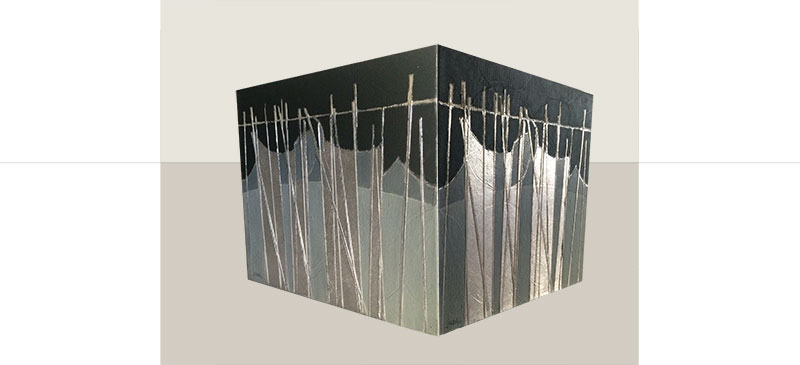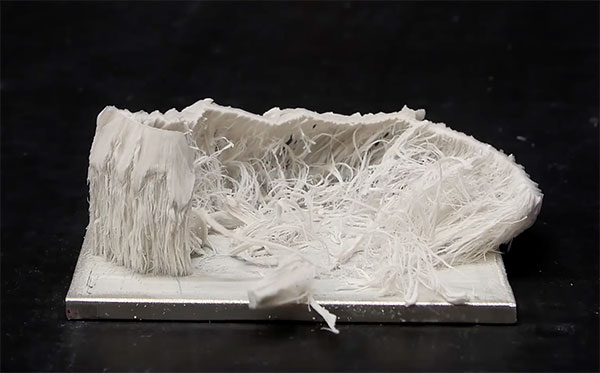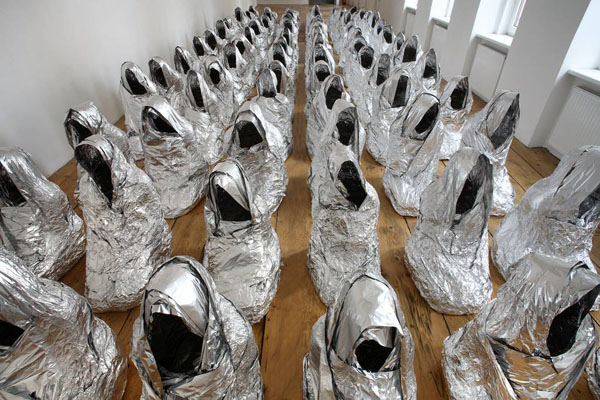When thinking of aluminum, kitchen foil may come to mind. Shiny on one side, matte on the other. Aluminum foil is generally 1.8 – 2.5 microns thick. Aluminum leaf at 0.4 – 0.8 microns is fragile but equally capable of excessive reflection and matte finish, frequently presenting an outcome unexpected and intriguing in its oxidization and reflective traits.

The challenge in working with metal leaf is adjusting underlying surface qualities affecting reflected light. The process is both compelling and frustrating as changing light or viewer location can quickly morph the image into new patterns of reflection.

Photo via youtube-aluminumandmercury
The video frame is from a time lapse of a mercury blob’s interaction with aluminum. With the protective oxide layer of the aluminum plate removed, mercury is able to initiate a fragile amalgam formation of aluminum oxide. It grows in height and width and collapses as it crawls across the plate.

Photo via telegraphUK
Expansive use of aluminum foil presents a discordantly cold but softly reflective portrayal of shrouded ghost-like women. An unexpected and jarring contrast of light occurs. Aluminum highlights darkness within empty figures and harshness of the disturbing political context that speaks of women and religion.

La
How brilliantly imaginative.